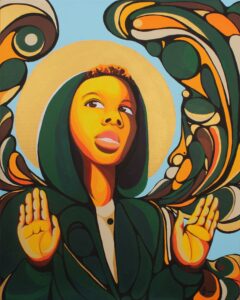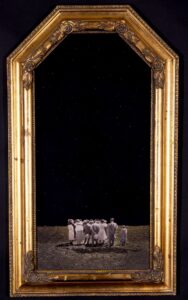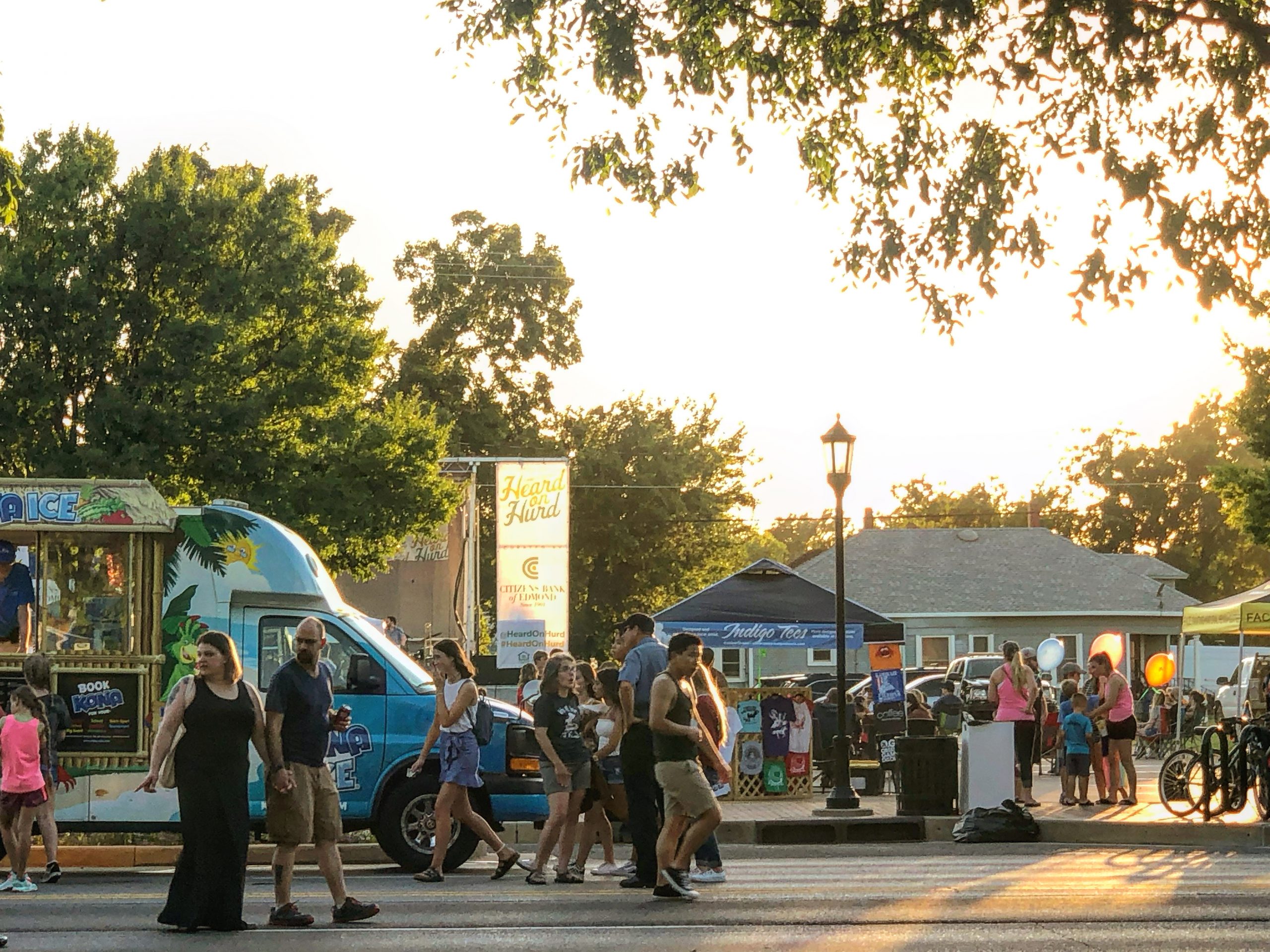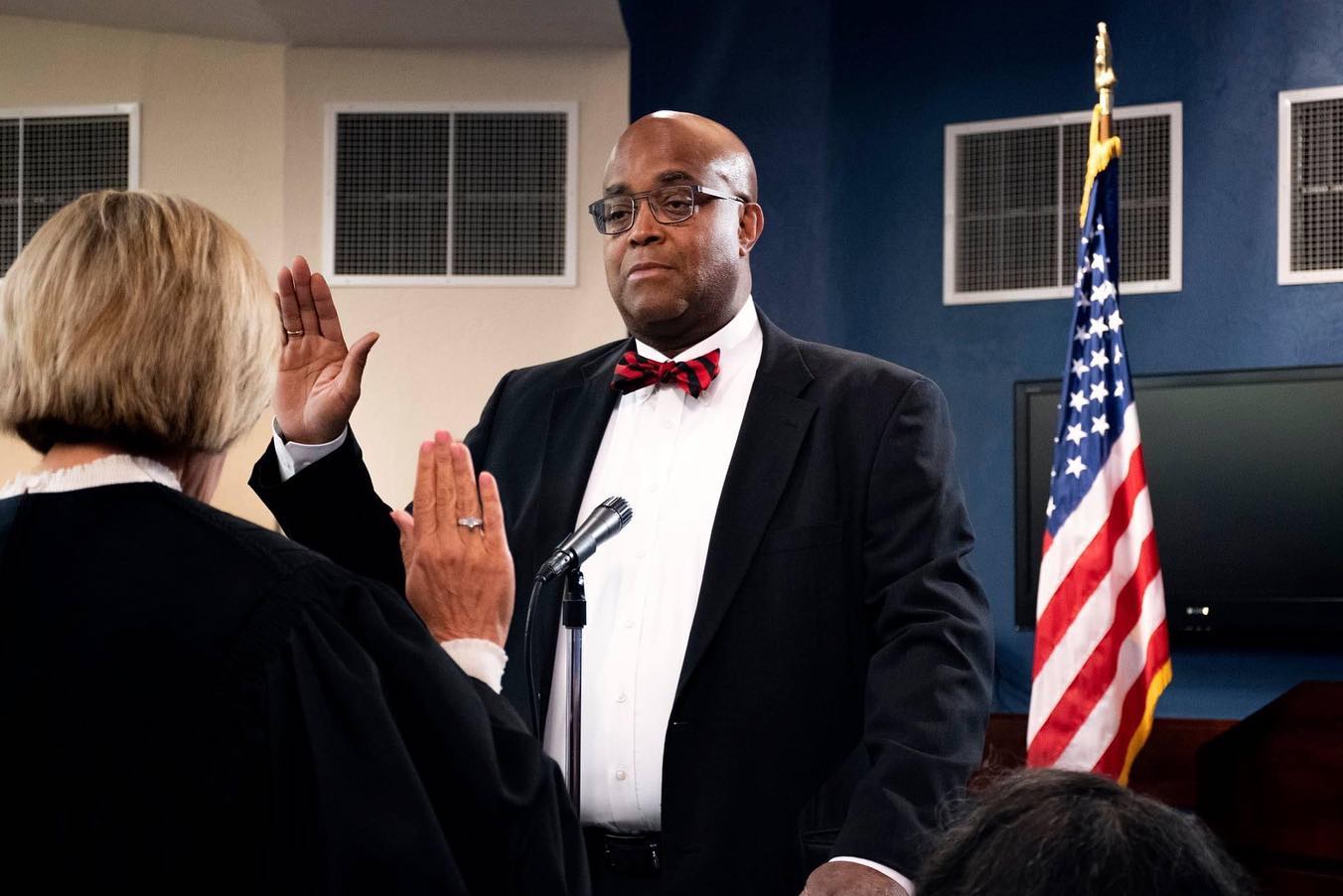We Believe in the Sun exhibition celebrates ongoing impact of Civil Rights movement in OKC
![]()
Title stems from Clara Luper’s testament of faith in the sun even ‘when it didn’t shine’
Oklahoma Contemporary’s newest exhibition, We Believed in the Sun, celebrates the enduring legacy of the Civil Rights movement in Oklahoma  City. The exhibition, opening in the Mary LeFlore Clements Oklahoma Gallery on May 6, pairs Ron Tarver, an Oklahoma-born, nationally recognized artist and recent awardee of the 2021 Guggenheim Fellowship in photography, with Ebony Iman Dallas, an emerging artist based in Oklahoma City.
City. The exhibition, opening in the Mary LeFlore Clements Oklahoma Gallery on May 6, pairs Ron Tarver, an Oklahoma-born, nationally recognized artist and recent awardee of the 2021 Guggenheim Fellowship in photography, with Ebony Iman Dallas, an emerging artist based in Oklahoma City.
We Believed in the Sun draws on Tarver’s and Dallas’ deep familial roots in the state, which have provided them with the critical intimacy to artistically explore both public and private perspectives on Black Oklahomans’ intergenerational struggle for equal opportunity and protection under the law.
Dallas shares personal histories through bold, colorful, multimedia works, while Tarver produces layered compositions with photographs that incorporate images taken by his father in the 1940s and ’50s in Fort Gibson, Okla. Together, the works consider family and community as sources of hope and strength, as well as sites of refuge, mourning and possibility. The exhibition title comes from a quote by Civil Rights icon Clara Luper:
as sites of refuge, mourning and possibility. The exhibition title comes from a quote by Civil Rights icon Clara Luper:
“I came from a family of believers. We believed in the sun when it didn’t shine. We believed in the rain when it wasn’t raining. My parents taught me to believe in a God I couldn’t see.”
We Believed in the Sun complements the statewide activities commemorating the 1921 Tulsa Race Massacre, extending the conversation and recognizing communities rooted in Oklahoma as important strands within the historical lineage of racial justice from one generation to the next.
Co-curated by Christina Beatty, project coordinator for the historic Freedom Center, and Pablo Barrera, Oklahoma Contemporary’s associate curator, in consultation with the Freedom Center and Clara Luper Center for Civil Rights and the Oklahoma Historical Society, We Believed in the Sun will illuminate overlooked aspects of the larger history of Black Oklahomans that resonate with present-day African-American communities in the state.
“2021 is such a banner year for thinking about what it means to be Black in Oklahoma. The parallels between the centennial commemoration of the Tulsa Race Massacre and last year’s civil and social unrest about how Black lives are still being taken too often shed a light on the work that remains regarding basic human and civil rights,” said Beatty, who until recently served as manager of public programs and community engagement for Oklahoma Contemporary.
“We began work on this exhibition well before the protests started last spring, but it certainly gave this effort new dimensions of meaning. Along with the personal stories of each artist, both Ron and Ebony’s work explores the lived experience and human cost of inequity, but also highlights a shared sense of pride and intergenerational drive to strive for better,” Beatty said.
It’s meaningful that We Believed in the Sun will be installed in Oklahoma Contemporary’s Mary LeFlore Clements Oklahoma Gallery, which provides a platform for the work of Oklahoma-connected artists in powerful companion shows to exhibitions in the Eleanor Kirkpatrick Main Gallery.
“We Believed in the Sun presents Oklahoma-specific stories, subjects and contexts that resonate with Civil Rights themes,” Barrera said. “Narratives on Civil Rights tend to focus only on triumph and tragedy, limiting African American identity to either ‘hero’ or ‘victim.’ Contemporary art can provide a path to explore complex realities surrounding Civil Rights movements.”
Tarver’s and Dallas’ works will also be in conversation with Crystal Z Campbell’s artist-in-residence installation, Flight, a multimedia presentation that explores the physical, architectural and cultural residues of the 1921 Tulsa Race Massacre. We Believed in the Sun renders visible the historical arc of the complex lived experiences of Black Oklahomans.
About Oklahoma Contemporary
Oklahoma Contemporary is a multidisciplinary contemporary arts organization, providing a catalyst for the exploration of creativity and contemporary practice through a program of groundbreaking exhibitions, performances and educational programs. Developed by and for Oklahomans to present and explore the key innovations, issues and concerns of the art of our time, Oklahoma Contemporary does so while drawing on the dynamic aesthetic, cultural, historical and political landscape of the state. At its core, the institution is an inclusive space – Oklahoma Contemporary believes that art is for everyone and centers accessibility and education at the core of all programming. Exhibitions are always free. You are always welcome here. Oklahoma Contemporary is a regional 501(c) (3) nonprofit organization founded in 1989 by businessman and philanthropist Christian Keesee and Kirkpatrick Foundation Director Marilyn Myers.
About Ron Tarver
Born in Ft. Gibson, Ron Tarver serves as associate professor of art specializing in photography at Swarthmore College. Tarver previously spent 32 years as a photojournalist at the Philadelphia Inquirer, where he shares a 2012 Pulitzer Prize for his work on a series documenting school violence in the Philadelphia public school system. In the field of fine art photography, Tarver previously received a prestigious Pew Fellowship in the Arts in addition to the recent Guggenheim Fellowship. His work has been exhibited nationally and internationally in over 30 solo and 50 group exhibitions and is included in many private, corporate and museum collections, including the Philadelphia Museum of Art, the State Museum of Pennsylvania in Harrisburg, Oklahoma Museum of History, Studio Museum in Harlem and the National Museum of American Art in Washington, D.C.
About Ebony Iman Dallas
Ebony Iman Dallas is a fifth-generation Oklahoman and second-generation Somali-American. A multimedia artist, arts educator and writer, Dallas was featured in the Romare Bearden Centennial Celebration in 2011. She is currently a participating artist in the City of Tulsa’s Greenwood Art Project commemorating the centennial anniversary of the 1921 Tulsa Race Massacre. Dallas’ work has been exhibited extensively in group and solo exhibitions and can be found in private collections in Namibia, Somaliland, the United Kingdom and the United States. As an extension of her MFA thesis “Painted Bridges,” Dallas founded Afrikanation Artists Organization, based in Hargeisa, Somaliland and Oklahoma City, to unify African-American, Afro-Caribbean and continental African populations through art and design for community activism and outreach.











